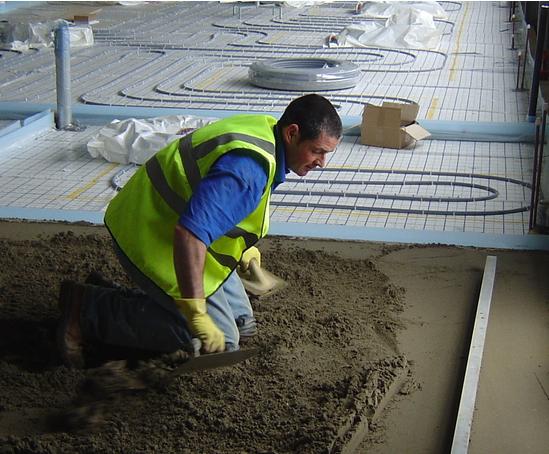Somehow it happened that in no apartment in our multi-storey buildings you will find perfectly even floors. Indeed, very often builders do not pay much attention to aligning all the mounds and depressions on the floor, and the newly made apartment owner does not immediately notice these shortcomings. Relief floors only after some time begin to callus eyes and make you think about how to align them. Because it is simply impossible to lay laminate, parquet, or tile on such a lumpy surface. In this case, leveling mixes for floor screed will help. Of course, in the case of tiles, you can even the floor with glue, but this is fundamentally wrong and also not cheap.
To prepare the surface for flooring, you need to decide which type of mixture will be more convenient to work with. All leveling mixes for floor screed are divided into two groups:
- self-leveling mixtures that spread and independently take a perfectly horizontal position;
- mixtures requiring alignment with a spatula.
Now I propose to dwell on each type of mixture in more detail in order to understand what exactly is needed and make the right choice.
Truly self-leveling - these are mixtures for screeding with a possible application thickness of up to 20 mm. They are intended for renovations. But these compositions are usually used with fiberglass mesh, and they are self-leveling in limited areas, for a large area you will have to use dividing rods.
If the floor needs to be updated, it is better to give preference to mixtures with a maximum layer of up to 5 mm, it is precisely such compositions that can be poured over a large area, and they themselves will take an ideal position. But it is worth noting that in order to avoid cracks and tears, it is necessary to strictly observe the proportions when mixing the solution.
If the base of the floor has large depressions and tubercles, then it is leveled in two stages. First, coarse mixtures are used to screed the floor, and then finish. Rough are used to create slopes and when installing underfloor heating. These compounds are only conditionally called self-leveling, in fact they are distributed on the surface manually with a spatula.

In order to calculate the consumption of the mixture for any type of floor screed, simple calculations will be required. The average consumption of the mixture with a thickness of 1 mm is 2.2 kg per 1 m², after calculating the average floor difference, you need to multiply this value by 2.2 and the number of squares of the floor area to be poured. To find out the average floor difference, it is necessary to measure the heights and troughs of irregularities with respect to the zero value of the floor, then subtract the smaller from the higher value, and divide the difference in half. After calculating the flow, you can choose the right mixture for screed, its price will depend on the type, purpose and, of course, the brand of the manufacturer.
There is also such a thing as a bulk floor, and very often these compounds are confused with screed mixes. This is a gross mistake, because the self-leveling floor has increased wear resistance and can be used as a finish, but in the case of a screed, a subsequent floor covering is necessary.